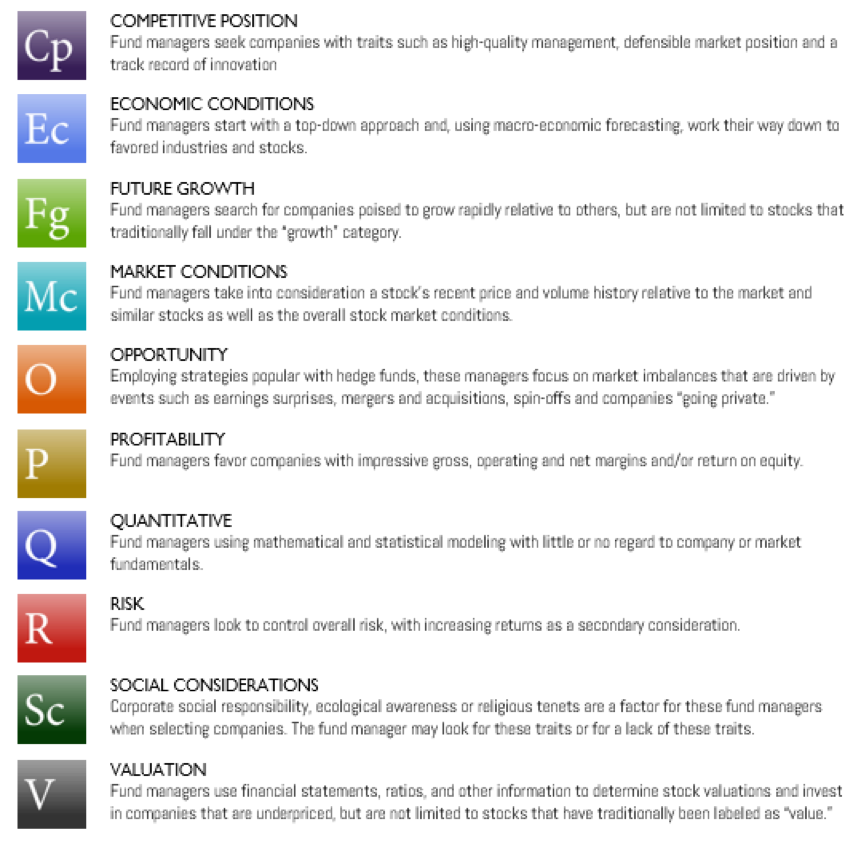Advisor Perspectives welcomes guest contributions. The views presented here do not necessarily represent those of Advisor Perspectives.
Q4 hedge fund letters, conference, scoops etc

A simple question was asked 30 years ago: “How should we group and evaluate active equity fund managers?” The answer to that question is the widely accepted style grid of market capitalization and value-growth. It was arbitrary, lacking research or academic foundation. Regardless, the widespread adoption of the style box has had pernicious, unintended consequences as managers are incented to adhere to it and track arbitrary benchmarks.
A powerful alternative is to organize managers by the investment strategy that a fund pursues. Once constructed, these statistically valid peer groups provide a comprehensive framework for portfolio construction, manager evaluation, fund selection, and benchmarking, and, quite surprisingly, can be used for stock selection and for managing market exposure or, in short, strategy-based investing (SBI).
Investment strategy as a new framework
Investment strategy – or process, or methodology – is the actual way a manager goes about analyzing, buying and selling investments. Strategy encompasses the manager’s general approach to stock picking as well as the specific elements upon which the manager focuses. This concept also applies to other asset classes.
As an example, a valuation manager (one of the 10 equity strategies to be introduced shortly) identifies and invests in undervalued stocks. The elements used by the manager to implement the valuation strategy might include P/E ratios, valuing future cash flows, or being a contrarian. Drilling down further, the specific criteria used by the manager, such as purchasing stocks with a P/E of less than 15, are the manager’s “secret sauce” and are not part of strategy categorization.
Armed with this basic, yet essential understanding of how professionals manage portfolios, organization around investment strategy is a powerful approach to investment management. Anyone who has looked at a large universe of managers quickly realizes there is a broad spectrum of investment strategies and a wide range of specific investment elements.
Identifying the strategy of U.S. and international active equity mutual funds is accomplished by gathering “principal investment strategies” information from each fund’s prospectus (SEC-mandated since 1998), which is input into a strategy-identification algorithm. This algorithm has been fine tuned using an iterative process involving manager interviews, gathering principal strategy information, eliminating keywords that generate false signals, and settling on a manageable number of strategies.
Over the last 10 years, our firm has gathered tens of thousands of pieces of strategy information for the 3,000 or so (ignoring share classes) U.S.-based active U.S. and international equity mutual funds. The identification algorithm assigns specific strategy information to one of 40 elements (i.e. the specific things managers do to implement their strategy), which are then assigned to one of 10 equity strategies. The 10 equity strategies are listed below.
Active equity strategy descriptions
For example, competitive position managers focus on business principles, including quality of management, market power, product reputation, competitive advantage, sustainability of the business model and history of adapting to market changes. Economic conditions managers take a top-down approach based on economic fundamentals, and so forth for the other eight strategies. Those that believe equity managers deviate from their stated investment approach and therefore question the value of self-declared strategy should review my study that summarizes the initial test results.
The strategy database is updated monthly and has captured some data as far back as 1980. This is a self-identification process, so the number of funds varies across strategies. Summary strategy benchmark statistics are provided in Table 1 later in this article.
Read the full article here by C. Thomas Howard, Advisor Perspectives

